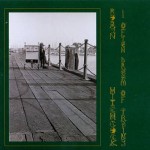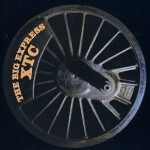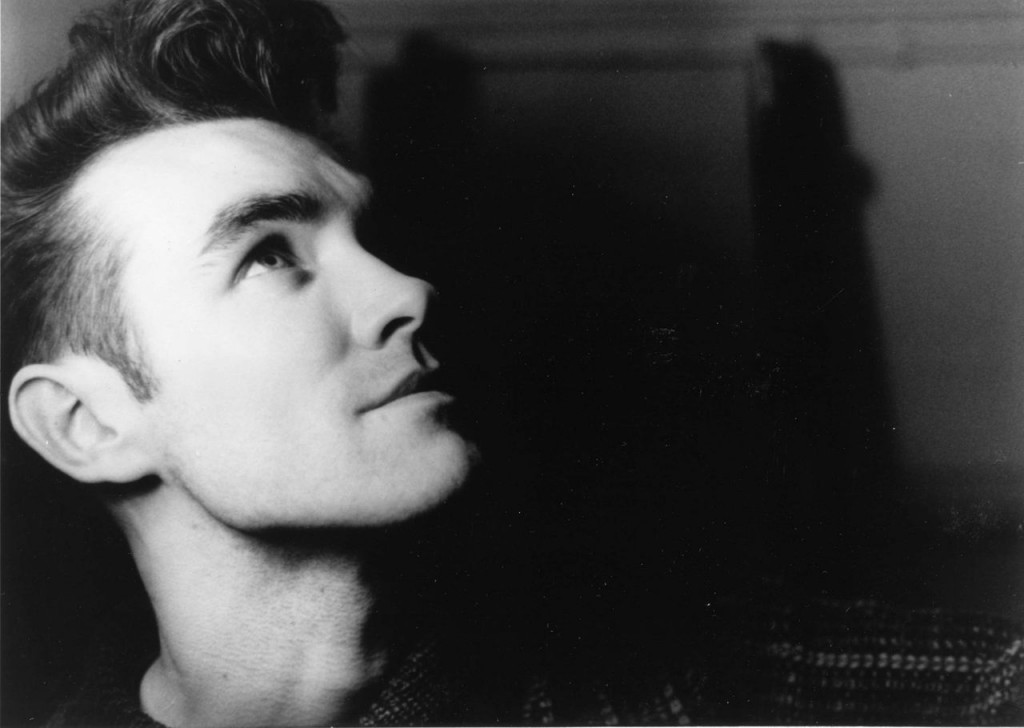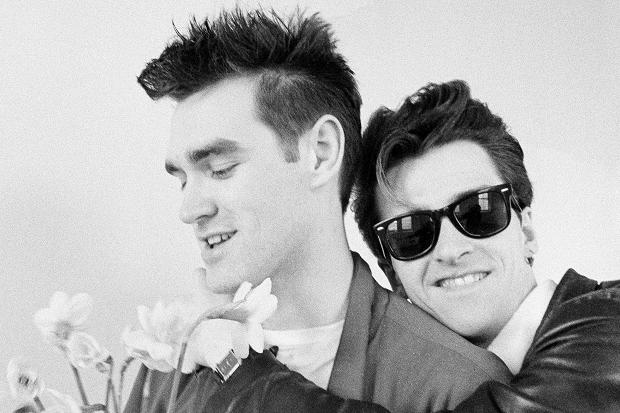Now it’s time to introduce you to one of the great loves of my life. Maybe not so much these days (I’m preoccupied by other things), and not in 1984 (I was too young), but somewhere maybe just after I hit puberty, the love hit me full and strong. I couldn’t get enough. I found books at the library, where most of the good things in my life have come from, and I read about it obsessively, over and over, memorizing certain passages and remembering them at unexpected moments. No one I knew felt the same way I did. I didn’t keep it secret, exactly, but who else was I going to talk to about it? There was no internet, no way of finding the like-minded. As with so many things in my life until I went to college, I had a private pleasure, something I enjoyed by myself and never talked about with anyone else.
I’m referring, of course, to rock journalism.
I had a subscription to Rolling Stone at various times growing up, and I picked up a few other magazines from time to time (Spin, Option, Alternative Press), but American rock journalism isn’t really where it’s at. You’d find out some basic facts about the artists, probably dutifully cribbed from press releases, and you’d get a polite “review” describing the album by mixing and matching a few key adjectives, giving it 2.5 stars, and moving on.
No, see, British rock journalism is what you want. I don’t know how they cook it just right, but they do. Maybe it’s that the UK is so much less spread-out than the States — like if basically every band came out of either New York City or Athens, Georgia and all the people writing about it lived in those two places and saw the bassist at the supermarket every other week. You’d write about them differently, wouldn’t you? A little more knowingly? American rock journalism treats bands as strangers, semi-mythological figures. British rock journalism probably went to the same school as the band and knew them when they were just stapling zines at the library. It doesn’t hurt that probably 90% of my favorite music is from the UK, but the way they write about it is so alive, so funny, so biting, so affectionate.
Before the internet, my main exposure to this stuff was — say it with me — library books. A lot of the best material from the big UK rags — the NME, Sounds, and the rest — used to be collected in “Rock Annuals,” and I used to scour the used and remaindered book stores for the ones I couldn’t find at the library. They contained page after page of album reviews, album cover reviews, artist profiles, and interview quotes. And there was one guy they used to quote a lot, for the simple reason that he was extremely quotable.
That would, of course, be Steven Patrick Morrissey.
A drunken goat could direct a Duran Duran video.
— Morrissey
The Smiths. I was so curious! Who was this legendary band that cropped up again and again? Who was the fey-looking lead singer who seemed completely unafraid to spit venom like some pacifist cobra, taking out politician and musician alike? From the way he talked, and the way people talked about him, surely the Smiths had to be insufferable. Surely they were both colossal assholes and terrible artists who were inexplicably and undeservedly popular.
Turned out, of course, that they were none of those things (Oasis, on the other hand, fit that description to a T). Instead they were geniuses. A lot of my favorite music from the 80s, as you’ve seen, was heavily synthesizer-based, but there was of course another thread running through those years based on relatively straightforward 60s guitar — Echo and the Bunnymen, REM, the Smiths.
The Smiths actually grew on me pretty slowly. The first albums I bought were the ones that came out around the time I became aware of them — Strangeways, Here We Come, their last studio album, and Rank, their live album. I loved both of those, played those to death, but for some reason was really slow to track down the rest of their catalog. Somewhere along the way, I did pick up their self-titled debut album, and though the songs were great, the production was terrible and it’s still hard to enjoy for that reason. I don’t think I even heard Meat Is Murder or The Queen Is Dead until college, which is bizarre given how immediately accessible those albums are. It’s true that Meat Is Murder is the one I like least, for the preachy title track and the limp “Well I Wonder,” but since the other seven songs are instant classics, how can you complain?
I’ve never found the Smiths or Morrissey depressing in the slightest. The Cure, yes, Joy Division, of course, but the Smiths? The lyrics are hilarious, the music is angelic. Depressed, with an ED? Maybe a bit. But so was I, and to Morrissey’s wryness, the sense of low expectations fully met, I could easily relate. I could probably also relate to his sexuality, though at the time I discovered him neither of us were open about it yet.
Still, you barely had to read between the lines to know that Morrissey’s official stance of “celibate” was little more than equivocation. Hatful of Hollow, the first of several compilations of non-album singles, B-sides, and rarities that would almost outnumber the studio albums, already included “William, It Was Really Nothing,” “This Charming Man,” “Handsome Devil,” “Hand in Glove” (“the sun shines out of our behinds, no, it’s not like any other love”), “Accept Yourself,” and “Girl Afraid,” all of which paint a pretty clear picture if you’re paying attention. Since Hatful also contains alternate recordings of “You’ve Got Everything Now” and the gorgeous “Reel Around the Fountain,” you could almost skip the debut album altogether, if not for the fact that you’d be missing out on one of my favorite Smiths songs, “I Don’t Owe You Anything.”
Morrissey’s melodies are sometimes a bit samey, hovering around the same few notes, but the lyrics are some of the best of all time, and best of all, they’re floating over Johnny Marr’s guitar. I like Morrissey a lot as a solo artist (less so lately, given his propensity for scheduling and then cancelling huge, expensive concerts), but what he did with Marr was pretty unstoppable.
Which is why I love the Smiths even more than I love rock journalism. And by the time this album was ten years old, the Smiths would help introduce me to someone I love even more than the Smiths or rock journalism. But all in good time.
Also:
 Robyn Hitchcock, I Often Dream of Trains
Robyn Hitchcock, I Often Dream of Trains
Hitchcock’s first foray into sparse solo territory, with piano, guitar, harmonica, and lots of space. Full of achingly beautiful acoustic ballads like “Autumn Is Your Last Chance,” the title track, and “Cathedral,” but also hilarious/annoying a capella numbers like “Uncorrected Personality Traits” and “Furry Green Atom Bowl,” not to mention the spirited loneliness complaint “Sometimes I Wish I Was a Pretty Girl” (“so I could whoop myself in the shower”).
 XTC, The Big Express
XTC, The Big Express
Yet another amazing XTC album, one of my favorites. It was their hardest-sounding record in several years, full of whipcracks and the Linn LM-1 (the best drum machine ever made) and wriggling, sinewy guitar. “Wake Up” is one of Colin Moulding’s best, and Andy Partridge’s vocals have never sounded stronger than they do on “Shake You Donkey Up,” “Seagulls Screaming Kiss Her, Kiss Her,” “(The Everyday Story of) Smalltown,” and “I Bought Myself a Liarbird.”
 Laurie Anderson, Mister Heartbreak
Laurie Anderson, Mister Heartbreak
The first Laurie Anderson song I heard, “O Superman,” gave me what Buffy Summers calls “the wiggins.” That “ha ha ha ha ha” vocal rhythm track gives me vertigo to the point where I want to throw up. Luckily it’s not on this album, and instead we get the slithery myth “Langue D’Amour,” the gorgeous hypnotic postcard “Blue Lagoon,” Anderson’s version of her duet with Peter Gabriel “Excellent Birds,” and what I can only describe as Where the Wild Things Are for grownup office workers, “Sharkey’s Day.” It also includes “Sharkey’s Night,” which is basically a remix of “Sharkey’s Day” with spoken-word vocals by William S. Burroughs. Gloriously weird.
And:
- The Smiths, The Smiths
- REM, Reckoning
- Depeche Mode, Some Great Reward
- The Cure, The Top
- Siouxsie and the Banshees, Hyaena
- The Pretenders, Learning to Crawl
- Eurythmics, 1984
- The Bangles, All Over the Place
- Madonna, Like a Virgin
- Prince, Purple Rain
Image sources:
- http://bigotherbigother.files.wordpress.com/2011/10/hatful-of-hollow.jpg
- http://cdn.americansongwriter.com/wp-content/uploads/2013/06/nAm8WsadGLX-5ZBdH9Krh-xOfsnssIB4P7jhe-vZkDA.jpg
- http://www.thetimes.co.uk/tto/multimedia/archive/00038/arts_02_38771c.jpg
- http://cps-static.rovicorp.com/3/JPG_400/MI0000/018/MI0000018559.jpg?partner=allrovi.com
- http://upload.wikimedia.org/wikipedia/en/0/04/XTC_bigexpress84.jpeg
- http://ecx.images-amazon.com/images/I/51V2xU3t7RL.jpg



You must be logged in to post a comment.